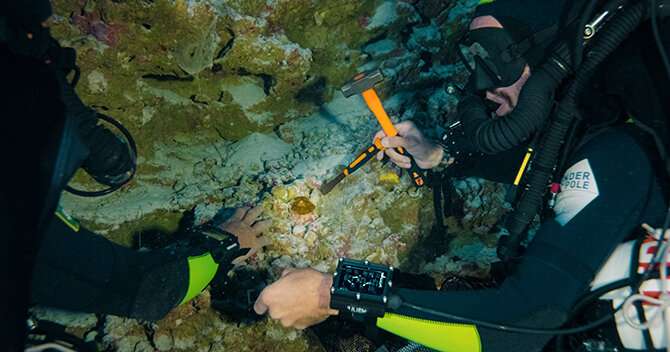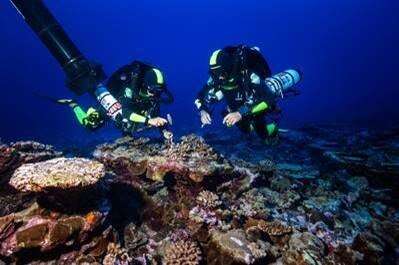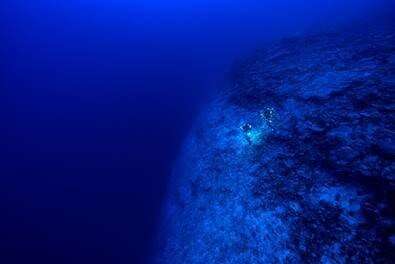Under the Pole divers and Leptoseris hawaiiensis coral at a depth of 172m (current depth record for photosynthetic scleractinian corals). Credit: Gaël LAGARRIGUE/UNDER THE POLE
In shallow water, less than 30 meters, the survival of hard corals depends on photosynthetic unicellular algae (zooxanthellae) living in their tissues. But how does the coral adapt at depth when the light disappears? French researchers from the CNRS, EPHE-PSL and their international collaborators, associated with Under the Pole (Expedition III), have studied for the first time the distribution of these so-called mesophotic corals in the French Polynesian archipelago, from the surface to 120 meters deep (with a record descent of 172 meters).
As the amount of light decreases, the coral associates with other filamentous algae, in addition to zooxanthellae, which become inserted into its skeleton. These algae, the only ones found at this depth, could therefore play an important role in the coral's adaptation to life at depth as they can capture shorter light wavelengths.
This work provides new knowledge on deep-sea coral ecosystems, which are the focus of growing interest due to their potential role as a refuge from the more directly threatened surface reefs.
This research was supported by the ANR and the results are published in The ISME Journal.
-
In teams of 2 or 3, the divers focus on two given depths to carry out their work. Credit: Franck Gazzola / UNDER THE POLE / Zeppelin Network
-
Two divers ascend 120 m after having deposited oceanographic sensors and taken coral samples. The Society Islands, Bora Bora, 17 September 2018. Credit: Franck Gazzola/UNDER THE POLE/Zeppelin Network
More information: Symbiotic associations of the deepest recorded photosynthetic scleractinian coral (172 m depth), The ISME Journal (2021). DOI: 10.1038/s41396-020-00857-y
Journal information: ISME Journal
Provided by CNRS


























